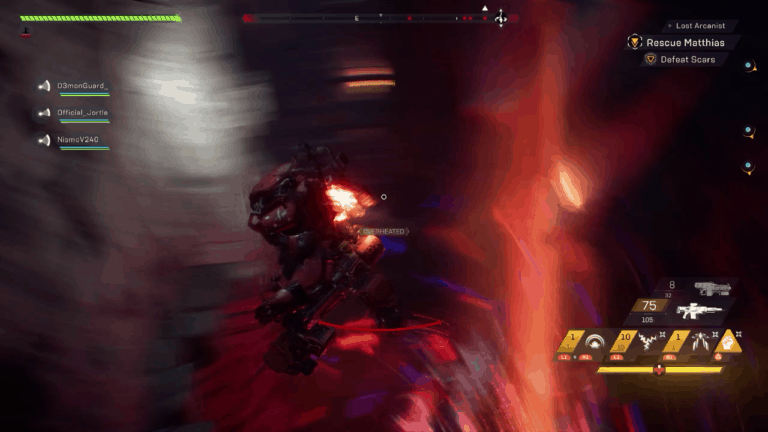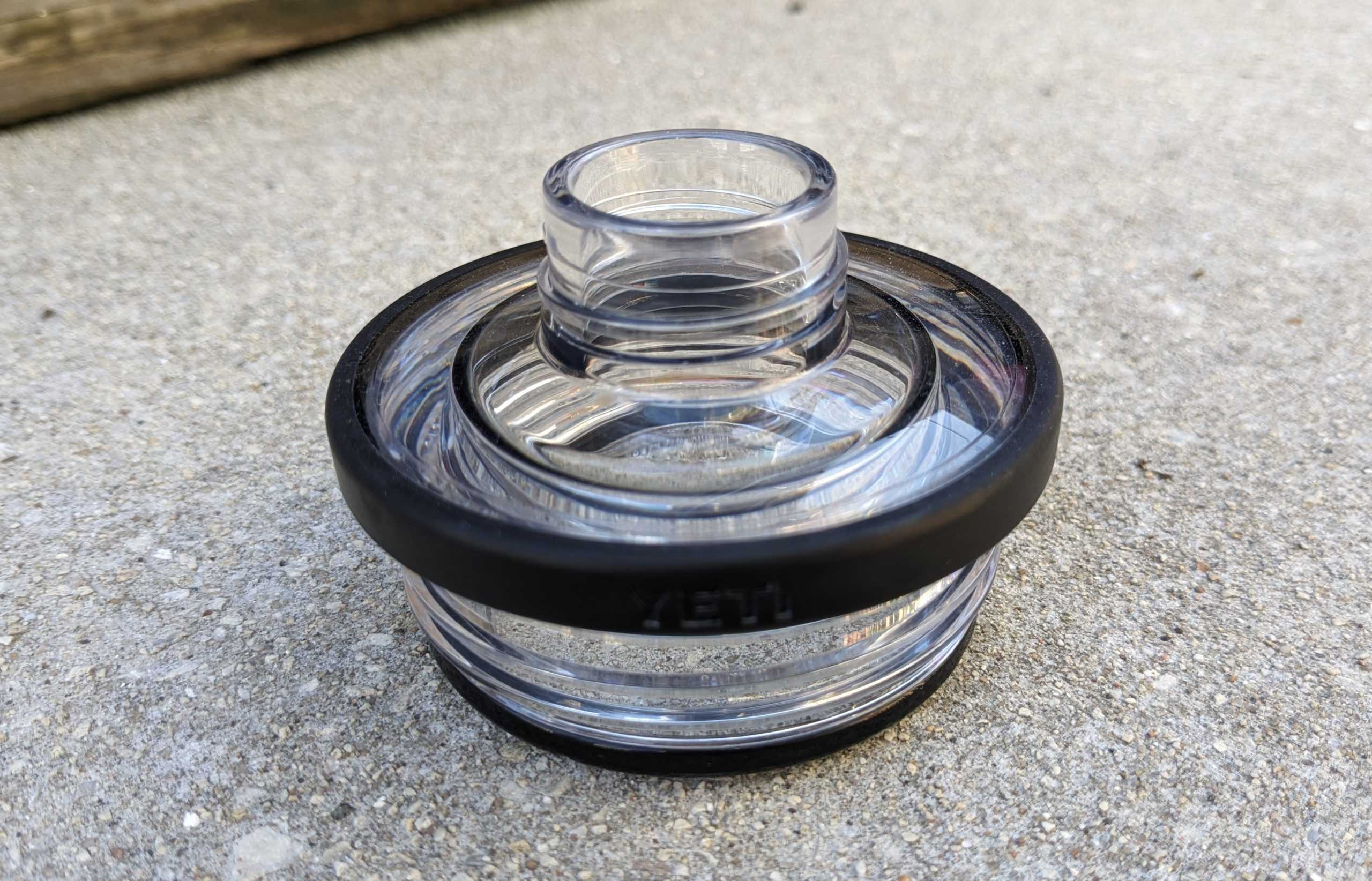There’s a lot that sucks about Anthem, but we all love to fly in video games. Every Anthem player agrees that zooming around in your robo-suit is the best part of the game, which is why gamers everywhere were shocked to learn flight had been removed and reinstated several times over the course of the game’s development. Anthem, in other words, was not designed around flight as a core movement mechanic.
When we played Anthem for the first time, flight seemed a bit awkward but pretty cool. Later we started playing Starlink: Battle for Atlas—a heart-and-soul space-flight game. Flight in Starlink is easy, fluid, and seamlessly integrated into the planetary and star system maps. It makes piloting an Anthem javelin look like the dubious, hacked-together feature it was. There are plenty of complaints online that flying in Anthem on PC sucks; we’re here to say it sucks on console, too.
Anthem devs said they looked to Gravity Rush 2 for inspiration. Gravity Rush 2 does not have a flight mechanic; the game merely allows players to alter the direction of gravity, in essence changing the direction in which they fall. Gravity Rush’s mechanic is bewitching. It draws the player into dizzying spatial conundrums, immersing her in strange new landscapes, the architecture and rubble of our world made alien by the difference in perspective. It’s super fresh—I’m inspired by it too—but it just ain’t flight.
We wish the Anthem devs would have taken cues from Starlink or any other hardcore flying game and made a truly flight-first game. The loot might have still have pissed everyone off, but the good feels of playing a fat robot who floats around blasting baddies might have kept players in the game.
Starlink: Total Control With One Thumb and True Flight at the Press of a Button
Before grumbling about our overheating javelins, let’s look at what the controls look like in Starlink, a game designed for flight (also, incidentally, designed for ease of use, with children as the core market segment.) In Starlink, your spaceship is always “airborne;” without flight mode engaged, it hovers a meter or two above the ground. When you’re cruising around a planet, or in combat, being so near to the ground feels much the same as walking or standing on land. You’re flying, but your point of view, and the quality of your interactions with the environment, are much the same as games in which you play a bipedal humanoid toting an AK-47.
You steer with the left stick, and that stick completely controls and modulates your movement. Tilt it forward, you’re moving forward. At rest, you’re hovering, inert. If you pull the stick back, you drift backward. The O button provides a speed boost, which, when active, gives your ship the ability to gain some altitude coming off hills and perform a barrel roll when you tilt left or right. To summarize, one thumb in Starlink calibrates all your movement, just as it does in 99 percent of the games we know and love.
Flight mode in Starlink is engaged with R1. Unlike the game’s just-chillin’ hover mode, flight mode is hard and fast. Your ship races over topography and travels to the other side of a planet in the blink of an eye. If you aim high, you pass through the planet’s ozone layer and shoot into space. Hitting R1 again deactivates flight mode.

We wish it were that easy in Anthem. At first, Anthem’s flight controls seem simple. You must first be airborne to activate flight. Just jump in the air with the X button, or throw yourself off a cliff, and then activate L3 (depress the left joystick). This takeoff sequence feels as good as starting a lawnmower with a pull cord. Repeatedly pushing in controller joysticks is the biggest cause of repetitive stress injury, or “gamer’s thumb,” at least for me. And while I wouldn’t claim that all games that require frequent use of L3 have terrible controls, Anthem doubles down on the pain by involving L3 in a complicated, conditional sequence that you often need to complete multiple times in a few seconds.
In additional to the painful start-up sequence, the flight controls are awkward and too involved. Guiding your airborne movement requires manipulating both sticks in a dance duo. The left stick controls the “throttle,” your speed. Apparently there are three distinct flight speeds, rather than a spectrum, and each speed affects the time your javelin takes to overheat. Figuring out how to touch the stick to achieve your desired speed level after you’ve jammed it hard to blast off is far from obvious; during my short time playing Anthem, I definitely thought full-throttle “fast” was the only option. If you manage to slow down and play with the throttle, your toon awkwardly stops and starts in the air with bursts of throttle every time you push the stick forward—and no matter what you do, you always feel a little bit out of control.
The right stick serves as the steering wheel, controlling the direction of your flight. If you depress R3, you can hover. And to drop to earth? For whatever reason, that’s the X button.
Here’s an Anthem flight sequence, without the use of special javelin flight abilities: X, L3, hold left stick in desired throttle position, turn right stick to desired cardinal direction, R3 to hover and maybe inspect something or shoot an enemy, L3 again to return to flight, then X to drop to the ground because you’re overheating. That same sequence in Starlink? The left stick. Just the left stick! If you want to do it high and fast, hit R1 and use the left stick.
Overheating: The Carrot VS the Stick, AKA the Minimap vs Blind Groping
Here at Co-op Gaming Dot Info we love the carrot versus stick metaphor. It applies to so many decisions developers and game creators make. If you want a horse to pull a cart, you can give him a carrot or beat him with a stick. So why do our Anthem javelins overheat? Why do we bang our heads on some kind of ceiling if we fly too high? Players hate these Anthem flight restrictions.
Over at Forbes, Paul Tassi, whose articles I’m always finding and reading with pleasure, gave us this hot take, “Anthem Should Remove Overheating From The Game Entirely.” I agree, Paul. It’s the stick, buddy! So why did the Anthem devs give us the stick? They wanted us to explore their beautifully created worlds and interact with the nice stuff they built for us there. They wanted us to have more fun:
“If you could just cruise over everything in the stratosphere, your Javelin’s boosters would probably feel more like a boring plane ride than a thrilling display of nimble aviation. ‘At that point, you could just head off into the distance and just sit there and not have to interact, or do anything with it,’ said Nordlander. ‘I think as soon as we lowered the ceiling a bit, and you actually had to fly through the world, we found that players were way more engaged by it – so that’s why we opted for that.’”
That’s the brunt of this GamesRadar article, “Anthem Devs Explain Why They Don’t Let You Fly As High As You Want.” As I mentioned above, Starlink beautifully solves that problem with its neutral close-to-the-ground flight mode. But there’s another way to get players to canvass every curve of your sexy map, squeeze themselves into every dark, wet cave, pump every stone, and lick every loot box. It’s a completely new, totally innovative game concept. Freshly built into every game engine just this year, 2019. You can still smell the paint drying on this state-of-the-art feature. It’s called a minimap.
Starlink’s minimap is probably too detailed. It has it all: every fortification, every enemy, every creature, even a dot for every gathering node. Valuable cargo in Starlink must be carried via tether to the front of your ship; if you drop your cargo while you’re fighting or completing a quest, Starlink even creates a dot representing your dropped cargo on the minimap so you can find it again. That dot is awesome.
Starlink’s minimap is awesome. It richly rewards players for slowly crawling over the surface of a planet. It sweetly suggests you stop and check your surroundings at all times. We never even engaged the game’s super-speedy flight mode on a planet unless we’d already explored the whole thing and needed to quickly visit a refinery or complete a quest. The minimap goodies were just too tempting. That’s the carrot!
I’m certain Starlink’s mini-map is so user-friendly because it’s readable for children, and it’s far too granular for most game developers’ tastes. I’m not suggesting all games should have minimaps so good you can practically play out of them without looking at the larger game screen. I’m saying that minimaps don’t ruin the thrill of discovery. If I see a dot on my minimap and it turns out to be an enormous waterfall leading to a cave filled with shimmering orbs, I’m in awe! Splendid! It feels just as good as it does when I “discovered it myself.” I still did the work of getting there.
The real issue is that Anthem developers wanted wanted players blindly groping for loot (loot’s the problem again!). Without marking local landmarks or handing out tourist booklets, they send us to an unfamiliar town to gawp and trudge the streets. They want us to love their city so profoundly that we are willing to walk into every single shop, though there are no signs on the doors. They want us to fly like a sugar glider, delivering a burst of muscular energy to L3, launching ourselves a short distance, but remaining mainly on the ground.
Give us a minimap, and let us fly free!






